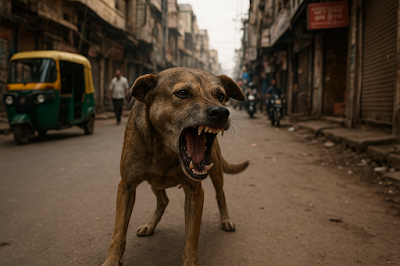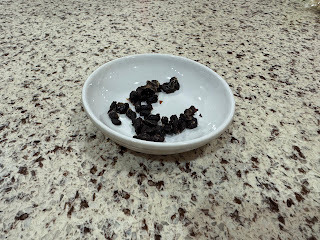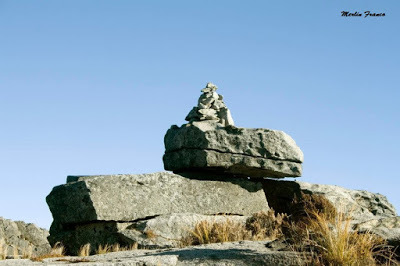Merlin Franco's Blog
August 26, 2025
Love the dogs, hate the kids—Indian elites and the stray dog problem
 AI generated image of a street dog
AI generated image of a street dog
In 2022, a 4-year old child was mauled to death by street dogs in Telangana, a state in Southern India. Late, on 11 June 2023, a 8-year old child was mauled by street dogs in Kerala. These precious lives have been reduced to mere statistical figures in the ever-exploding stray dog population in India. The Indian Express reports that in the first half of 2025 alone, an alarming 1.65 lakh people were bitten by street dogs in Kerala alone. Seventeen of these resulted in deaths.
Note: the following visuals are disturbing, unlike the viral cute videos of stray dogs licking their feeders's hands.
Press Trust of India reports that there are at least 62 million street dogs ruling the streets of India. In a highly populated country where urban spaces are shared by millions of poor road users most of who don't even have access to basic healthcare, street dogs are a menace. Compounding the problem is the elite stray dog feeders who care more for dogs and very little for people.
In early August, the Supreme Court of India did something that no Indian Government had the guts to do—it directed that all street dogs in Delhi are to be moved to animal shelters [see:]. This progressive ruling could have saved both human and dog lives, but for India's elitist stray dog lovers who happen to be the politically powerful due to their caste affiliations. They organised massive campaigns, mobilized their caste network in the big media houses and got the Supreme Court to rescind its order. Imagine the power these networks hold!
From absurd pseudo-science to emotional guilt-tripping, the extent to which these stray dog lovers could go to feed their ego is not just nauseating, but scary. Here are some facts that are not reported in the popular media about the stray dog problem.
1) Elite dog lovers and their hatred for fellow humans: The culprits behind rising stray dog problems, and injuries/ deaths they cause are the elite stray dog lovers of India. Most of these dog lovers hail from traditional vegetarian castes, for whom stray dogs are a medium to legitimize and express their caste hegemony. I have spoken to many of these people, they all share three common traits 1) extreme obsession of dogs, 2) hatred for the economically poor and marginalized humans (mostly from oppressed castes, too), and 3) a traumatic childhood.
It is common sense that dogs are kind and loyal to those who feed them. The dog lovers appreciate dogs for this 'unconditional love' that is mere servitude, forgetting that dogs are territorial and see any 'foreigner' in their territory as threat. It is unfortunate that many humans have to suffer for the sake of these narcissistic dog lovers.
Can you spot the 'poor' in the photo below?

2) The pseudoscience supporting stray dog cause and the scientific facts defeating them
Powerful and strong caste networks of these dog lovers penetrate every nook and corner of India's power citadels. These dog lovers, with their well-oiled non-profit fundings have been populating the narrative that dogs are important to urban ecosystems. For the gullible common reader, these falsehoods when repeatedly parroted, gets deeply imprinted in the mind. Some of the absurd pseudoscience peddled include dogs eating rats in the urban environment, and thus controlling plague (!) There is no scientific basis for such claims. What we know from science is the undeniable fact that stray dogs, together with stray cats are responsible for loss of biological diversity (source). Besides exterminating biodiversity through direct predation, stray dogs also cause indirect extermination through spreading of parasites. These are agents of ecological destruction!
3) The 'foreign funding' fueling stray dog love
Since 2014, Indian Government has restricted foreign aid flow into non-profits fighting hunger, poverty, malnourishment, and health ailments including Oxfam India and Missionaries of Charity (see). But the same government has placed no such restrictions on non-profits working for animal welfare (see). Such non-profits include the notorious People For Animals, run by Maneka Gandhi whose late husband Sanjay Gandhi terrorized India (see). How ironical is it that fight against poverty is demonized, but donations to protect stray dog welfare is encouraged?
These people campaigning on the streets in support of stray dogs might come across as good samaritans to the average guilt-tripped humans. But fueling their stray dog love is this unrestricted flow of funds, while, poverty fighting non-profits are struggling to find money.
While street dogs have replaced marginalized humans in funding priority, our silence supports an ecological and humanitarian crisis.
June 3, 2025
Book Review: Evie Woods' The Lost Bookshop
T𝐡𝐞 𝐋𝐨𝐬𝐭 (𝐒𝐭𝐨𝐥𝐞𝐧) 𝐁𝐨𝐨𝐤𝐬𝐡𝐨𝐩

𝗛𝗼𝘄 𝗳𝗮𝗿 𝗰𝗮𝗻 𝘆𝗼𝘂 𝗴𝗼 𝘄𝗶𝘁𝗵 𝗮 𝘀𝘁𝗼𝗹𝗲𝗻 𝘀𝘁𝗼𝗿𝘆?
The Lost Bookshop is a blatant ripoff of Woody Allen's Midnight in Paris. Hats off to Evie Woods for lifting the story, plot, and characters from a popular movie, that too, an Academy Award winner (best screenplay)!
Here's how Evie Woods effortlessly picked character traits, plot, and scenes from Woody Allen's characters, and does an effortless mix-and-match, and cut-and-paste for her novel:
𝐇𝐞𝐧𝐫𝐲, one of the three protagonists is a scholar looking for a lost bookshop from the 1920s. He is also searching for a lost manuscript. In Midnight in Paris, Gil Pender (Owen Wilson) is a writer lost in the nostalgia of 1920s. In Midnight in Paris, it is Gil Pender who is magically transported to the Paris of 1920s where he meets popular figures including Hemingway. Whereas in The Stolen Bookshop, 1920s is split between Martha and Opaline. Both Gil Pender and Opaline meet Hemingway. What a coincidence!
 Gil Pender with Hemingway
Gil Pender with Hemingway𝐌𝐚𝐫𝐭𝐡𝐚, is a derivative character spun out of both Gil Pender (Owen Wilson) and Gabrielle (Lea Seydoux). Much of her character is a poor imagination of what could have happened after 'The End' in Midnight in Paris.
 Lea Seydoux as the bookshop girl in Midnight in Paris
Lea Seydoux as the bookshop girl in Midnight in Paris𝐖𝐡𝐨 𝐢𝐬 𝐎𝐩𝐚𝐥𝐢𝐧𝐞? Opaline is a spinoff of the badass, cigar-smoking, Adriana, played by Marion Cotillard in the movie. After the half-way mark, Evie Woods has tried to do some original imagination, and create a story for Opaline (Adriana), throwing in some real history and agony to appeal to the readers' emotions. Sadly, they are lost in the stolen bookshop.
 Marion Cotillard as Adriana
Marion Cotillard as Adriana
Henry is in a loveless relationship with 𝐈𝐬𝐚𝐛𝐞𝐥𝐥𝐞, who is the exact copy-paste of Inez, played by Rachel McAdams. Evie Woods hasn't even bothered to change anything for this character. 𝑊𝑒𝑙𝑙, 𝑤ℎ𝑦 𝑠ℎ𝑜𝑢𝑙𝑑 𝑠ℎ𝑒?
 Rachel McAdams as InezThat brings us to our question—𝗛𝗼𝘄 𝗳𝗮𝗿 𝗰𝗮𝗻 𝘆𝗼𝘂 𝗴𝗼 𝘄𝗶𝘁𝗵 𝗮 𝘀𝘁𝗼𝗹𝗲𝗻 𝘀𝘁𝗼𝗿𝘆?
Rachel McAdams as InezThat brings us to our question—𝗛𝗼𝘄 𝗳𝗮𝗿 𝗰𝗮𝗻 𝘆𝗼𝘂 𝗴𝗼 𝘄𝗶𝘁𝗵 𝗮 𝘀𝘁𝗼𝗹𝗲𝗻 𝘀𝘁𝗼𝗿𝘆? Well, if you are Evie Woods, backed by HarperCollins and supported by an army of BookTokers and Reviewers who fall for the allure of big brands, you can sell more than a million copies. The supporting machinery will immediately kick into place. In no time, your book will be shortlisted for the British Book Awards, find its way into Sunday Times Top 10, hit Wall Street Journals Weekly List, and earn 98,254 five star ratings on goodreads!
Photographs from the movie (C) Sony Pictures
Book Review: Emilie Woods' The Lost Bookshop
T𝐡𝐞 𝐋𝐨𝐬𝐭 (𝐒𝐭𝐨𝐥𝐞𝐧) 𝐁𝐨𝐨𝐤𝐬𝐡𝐨𝐩

𝗛𝗼𝘄 𝗳𝗮𝗿 𝗰𝗮𝗻 𝘆𝗼𝘂 𝗴𝗼 𝘄𝗶𝘁𝗵 𝗮 𝘀𝘁𝗼𝗹𝗲𝗻 𝘀𝘁𝗼𝗿𝘆?
The Lost Bookshop is a blatant ripoff of Woody Allen's Midnight in Paris. Hats off to Evie Woods for lifting the story, plot, and characters from a popular movie, that too, an Academy Award winner (best screenplay)!
Here's how Evie Woods effortlessly picked character traits, plot, and scenes from Woody Allen's characters, and does an effortless mix-and-match, and cut-and-paste for her novel:
𝐇𝐞𝐧𝐫𝐲, one of the three protagonists is a scholar looking for a lost bookshop from the 1920s. He is also searching for a lost manuscript. In Midnight in Paris, Gil Pender (Owen Wilson) is a writer lost in the nostalgia of 1920s. In Midnight in Paris, it is Gil Pender who is magically transported to the Paris of 1920s where he meets popular figures including Hemingway. Whereas in The Stolen Bookshop, 1920s is split between Martha and Opaline. Both Gil Pender and Opaline meet Hemingway. What a coincidence!
𝐌𝐚𝐫𝐭𝐡𝐚, is a derivative character spun out of both Gil Pender (Owen Wilson) and Gabrielle (Lea Seydoux). Much of her character is a poor imagination of what could have happened after 'The End' in Midnight in Paris.
𝐖𝐡𝐨 𝐢𝐬 𝐎𝐩𝐚𝐥𝐢𝐧𝐞? Opaline is a spinoff of the badass, cigar-smoking, Adriana, played by Marion Cotillard in the movie. After the half-way mark, Evie Woods has tried to do some original imagination, and create a story for Opaline (Adriana), throwing in some real history and agony to appeal to the readers' emotions. Sadly, they are lost in the stolen bookshop.
Henry is in a loveless relationship with 𝐈𝐬𝐚𝐛𝐞𝐥𝐥𝐞, who is the exact copy-paste of Inez, played by Rachel McAdams. Evie Woods hasn't even bothered to change anything for this character. 𝑊𝑒𝑙𝑙, 𝑤ℎ𝑦 𝑠ℎ𝑜𝑢𝑙𝑑 𝑠ℎ𝑒?
That brings us to our question—𝗛𝗼𝘄 𝗳𝗮𝗿 𝗰𝗮𝗻 𝘆𝗼𝘂 𝗴𝗼 𝘄𝗶𝘁𝗵 𝗮 𝘀𝘁𝗼𝗹𝗲𝗻 𝘀𝘁𝗼𝗿𝘆?
Well, if you are Evie Woods, backed by HarperCollins and supported by a coteirie of BookTokers and Book Reviewers, who fall for the allure of big brands, you can sell more than a million copies. The supporting machinery will immediately kick into place. In no time, your book will be shortlisted for the British Book Awards, find its way into Sunday Times Top 10, hit Wall Street Journals Weekly List, and earn 98,254 five star ratings on goodreads!
February 14, 2025
A radical proposal to rebrand Valentine’s Day as Asian Kindness Day, in Singapore
Today is Valentine’s day, which is not only for romantic lovers, but a day for celebrating kindness and goodness of humans around us. I was looking around for some inspiration, and came across this heartwarming incident.
An ‘Asian’ lady has revolutionised the whole kindness influencer industry in Singapore. She has been going around distributing 50 cents worth of soft drinks to South Asian labourers and getting photographed with them, for her TikTok channel.

But as with any act of kindness, the ungrateful Brown people have been criticising this as a publicity stunt. I condemn that. I ask these ungrateful, nitpicking, naysaying Brown humans: have you ever photographed yourself buying a fifty-cent drink for a Brown labourer? If you haven’t, then you don’t have a moral right to criticise her.
Many of us are only seeing the monetary value of the drink she buys. Nobody would criticise her if they realise the actual value of her gesture. To understand this, we need a bit of role play.
Imagine yourself as a five-year-old Asian kid in Singapore—you are throwing a tantrum just like any normal Asian kid would do—maybe you asked your momma to buy the Eiffel tower or the White House for you, because you know…the Dragon has risen. But your momma breaks your little heart by saying that the Dragon hasn’t risen fully yet, and it’s going to be a few more centuries for that.
Now you are in deeper grief, and your momma tells you that if you don’t stop crying, apu ne-ne, the Indian man with a big moustache will grab you. You are now scared to the core, and stop crying immediately. Imagine yourself growing in that environment of fear, the trauma of having to see many dark-skinned apu ne-ne around you. As you grow up, you struggle to deal with this trauma—to avoid those monsters condemned in ‘Asian’ culture, avoiding making any eye contact with them, gradually mastering the art of seeing and unseeing them within a fraction of a second.
By the time you reach adulthood, you have mastered that trauma, but the scar remains deep inside you. I want you all to empathise with that five-year-old ‘Asian’ kid. For such a lady to get within five-feet distance of a Brown person itself is a giant leap of courage. And no Brown person seems to understand that. Where is your emotional intelligence, people?
Remember the good old days where Crazy Rich Asians used to travel to India and Africa to gift candies and pencils to shirtless downtrodden children and get photographed with them? Now, this Asian lady has shown that one doesn’t have to travel that far to demonstrate kindness. You can do that within Singapore itself. That is not a small feat. She has revolutionised the whole kindness influencer industry!

Honestly, I am not worried about the validity of her act. I am rather concerned about her safety. Look at the picture again—she is so close to a Brown person. What if the guy mistakes this profound act of kindness for something romantic and buys her a rose flower for valentine’s day? She’s going to get a heart attack. And I can’t imagine the trauma her family will have to go through, if that happens. Guys, let’s all pray that she is safe.
On this occasion, I request all my fellow Brown people to celebrate February 14, 2025 as Asian kindness day. Let’s all use this day to remember the ‘Asian’ Asian people in our lives—those who showed the remarkable courage to make eye contact with us, those who demonstrated the leap of faith to walk next to us, sit beside us in a public bus, MRT, etc. Such kindness cannot be repaid even in our next seven births. But we can always try.
To mark this day of gratitude, I call upon all my fellow Brown people in Singapore to go to your local fish markets and buy the best fish you can. Clean the fish nicely, and separate the skin from the meat. You can keep the worthless meat for yourself. But those priceless fish skin—you fry them nicely. But remember not to add any chillies! Handover pieces of these fried fish skins to the kind ‘Asian’ people in your lives on February 14. And, please don’t forget to photograph it.
My ungrateful Brown people, can you do that, please?
September 26, 2024
How to make yummy Beef Laddu (Pawan laddu)

Before reading this, put your hand to your heart to mark this poignant moment in history. Because you are about to learn a secret recipe that was known to only to a few elite people in the world, including Pawan Kalyan, Chandrababu Naidu, and myself. As a firm believer in India’s vibrant democracy, I reveal this secret for the benefit of the masses.
Beef laddu, or Pawan laddu as it is fondly called in Andhra Pradesh, is a mouthwatering dessert that was once the food of the dark-skinned asuras. However, because of a Christian missionary conspiracy, the laddus that were prepared for the asuras lost their way and ended in the hands of born-vegetarians. Since then, the episode has broiled into the hottest issue in India, eclipsing petty issues such as the eighty million people living in poverty, communal riots and loss of lives in the Eastern Indian state of Manipur, and the billions of rupees appropriated from the public by Supreme Leader in the form of PM Cares fund.

The ingredients you need
Estimated time required: 6-24 hrs for marinating the beef, 4 hours for dehydrating the beef (add 1-6 months for post-mob attack recovery if you live in India).
Step 1: Lock your door (if you live in India)
Step 2: Shred the beef into small pieces, soak it in a thick jaggery solution and leave it in the refrigerator for 6-24 hours for marination.
Step 3: Remove the beef, pat it dry on a paper towel (use of handkerchief, or pallu of saree, lungi tip is not allowed).
Step 4: Dehydrate the beef in a dehydrator (like it is done for beef jerky), or heat it in a hot-air oven at 75 degrees Celsius for four hours. Keep the oven door slightly open to let the moisture escape. A well-done beef should look like Pawan Kalyan, the saviour of future India. Mine looks like Chandrababu Naidu as I took it off the oven prematurely. It is okay for the beef to look like Chandrababu Naidu if you intend to consume the laddu immediately.

Step 5: Dry roast the rava until it is acceptably aromatic. Nicely roasted rava should give you goosebumps—as if you were listening to the Supreme Leader’s master speech about India becoming a superpower in 2024. Add jaggery to this rava and keep it aside.
Step 6: In a pan, heat the ghee and roast the beef and cashew nuts in it. When the nuts turn golden brown, add the raisins. Bring it down, let it cool to the lukewarm stage, and add the roasted rava to this.

Step 7: Stir well, and roll it into balls. If the beef was well-dehydrated, the laddus can be stored comfortably in your refrigerator until the value of 1 rupee equals 1 USD.
If you had read until here, consider buying my satirical novel Saint Richard Parker. It narrates the story of a cow-offender—how karma catches up with him even when he runs away to Southeast Asia. I am thinking of donating 1 rupees/ book sold to Janasena Party, founded by Pawan Kalyan, our Supreme Leader Jr. in the making.
Statutory warning: Possessing, consuming or dreaming of eating beef in India is a criminal offence punishable by mob lynching or imprisonment.
March 5, 2024
Ode to Dr. Oli

Those who know my split personality would recognise that grumpy half of mine under the academic hat. The University for which I work has well-behaved students—well behaved to an extent that the corridors could be eerily silent. Climbing up the stairs next to the elevator, I often wish that the corridors had some life—the chatters, cacophony, and thud-thud of footsteps expected from an academic institution. But, the corridors remained calm, reeking of the same eerie silence.
But things changed one day, and the corridor suddenly sprung to life. That was a stray ginger kitten whom I learnt later to be named as Dr. Oli by the staff and research assistants who adopted her as the Faculty pet. Dr. Oli was slow to grow in size, but grew faster in stature. She became the fulcrum of the corridor, always at the centre of attraction, surrounded by staff and students. The staff and students were her fans who pampered her with treats and a little cardboard house (pic).
My relationship with Dr. Oli was a ‘long distance’ one as I am not a fan of stray domesticated animals (they belong to homes and not the streets!). Besides, stray cats and dogs are one of the biggest threats to wildlife. I know you are now wondering why didn’t I adopt her—well, some questions should be left open-ended. Every time I passed by her, we exchanged glances and meows.
Here we have a tiny kitten who has lit up the corridor and broken the monotony of the mundane. Faces glow on seeing her, and people even visited the University on public holidays to feed her. Such was her magical charm!
But all good things have to come to an end, and one day, she lost her life to a gang of long-tailed macaques. Those nasty creatures had not only wrung the life out of her, but stomped over the happiness she brought to a faculty. I still see many of her fans getting teary-eyed while recollecting the fond memories she had left behind. For a long time, many left flowers before the cardboard box that used to be her home (pic). I could never walk down that corridor without remembering her. So, here is it, to Dr. Oli, the little creature who brought us happiness, and taught us many a thing...We will always miss you!
March 7, 2020
A tuk-tuk love story
While the world was preparing for 2020, we were at KIMS hospital Thiruvananthapuram with my Dad who was putting up a brave fight. I was on night vigil, staying awake during night, and returning home in the morning.
I noticed this auto rickshaw aka tuk-tuk parked opposite to the entrance of KIMS on the first morning.
I found it interesting for its dusty windshield that had turned into canvas for Mr. Romeo to express his unrequited love for Achu.
This is a photoessay of Romeo's love for Achu, as it developed every morning, brought to you by yours truly.
Achu in Kerala is a shortened version of the popular female name Aswathy. Of course, as my good friend Dr. Rayson pointed out, it could also be someone expressing his love for Acha (Acha= dad). I am going with Achu (for Aswathy).
Day 1:

Mr. Romeo's love for Achu appears on the dusty canvas. As they say, the beautiful Lotus blooms on murky waters!
Day 2:

Kannan and Surya appear on the scene. Every love story requires a villain. Make it two, and the story becomes interesting.
Day 3:

The story becomes even more interesting with the entry of the chief villain Sachu. Romeo has to compete with Kannan, Surya and now Sachu, for Achu.
Not much space there. It's getting crowded!
Day 4:

According to Paulo Coelho's law of Universal Support first cited in the book of Alchemist, When you want something, all the universe conspires in helping you to achieve it .
How true. It rains!
The Rain God drives away two competitors. But Suchu hangs on, and the fight is now one to one. But fear not, for Mr. Romeo has the support of the Universe and God (note the appearance of 'Oum' there).
Fortunately, Dad won the fight and he was discharged two days after 2020 dawned. I do not know how the story developed further.
If you happen to be in the vicinity of KIMS Thiruvananthapuram, look out for this auto rickshaw and its dusty canvas. Romeo's love for Achu is just one of the many stories it has to say!
June 23, 2018
One hundred ties

One hundred ties is the story of one hundred ties one could establish on a dance floor. Dance floors are notorious for breaking as well as hatching relationships. I haven't personally seen any romantic relationships blossoming there. But, have witnessed many friendships break over women fighting to get a dancer's attention, or men vying for a lady's attention- the latter rare, the former frequent especially when a handsome white guy is involved.
My first dance festival was the 3rd Latin Festival Madras & Kizomba Conference 2016. I had lived in Chennai for more than eight years and it felt good to be back. Chennai is a paradox with whom I have always had a love-hate relationship. One day I might get into an autorickshaw whose driver dreams of becoming a billionaire by fleecing me and just when i start to hate Chennai for that, I would find myself in another autorickshaw whose driver goes the extra mile to help me out. Life in Indian metropolitan cities require a special set of survival skills.
I danced a bit, spoke a bit, and watched the floor a lot, in classic introvert style. Everytime I retired to my seat, next to me was a Malaysian gentleman whom I admired for his passion for salsa and unique style. Let's call him B. Lee. Believe me, B. Lee was a 60+ gentleman who can put most young dancers to shame.
Post-midnight, the dancers started dispersing. People who were in the official hotel were chauffeured back, but those who stayed away had to find their own way- B.L. Lee was one among them. New to Chennai, and staying in a obscure Inn isn't the right combination. Eighteen hours after B. Lee hired a taxi, I was listening to the familiar story of a foreign tourist being taken for a ride. I felt sorry for him, and apologised.
A few months later, I met him again at Kuala Lumpur for the Afro-Lation Fest Asia- 2017. I was just recovering from a bad experience at the local mall where I fell prey to a shopkeeper who sold me a tie at 200% its original cost. I was in a hurry for the party that I noticed the original price stuck to the box only after reaching my room. In a dance floor where women desperately queued behind western men for a dance, we found a lot of time to talk. B. Lee apologised to me for what I had experienced.
Eighteen hours later, he handed me a beautiful paper bag full of sparingly used expensive ties. He insisted I accept them despite me telling him that I am not a fan of wearing ties and suits in tropical climate. Suits are meant for temperate conditions and I am yet to understand why Asians who live close to equator are so particular about wearing them. His Master's Legacy!
I never wore any of them, but take them out of the box often to have a look- they seem to have one hundred stories to say!
June 10, 2015
The Nudist in the sacred space

UNESCO’s criteria for World heritage Site lists down ten criteria, of which at least six have a cultural & human element. I was always under the impression that Kinabalu was recognized as a Heritage Site for its importance in indigenous culture, until the earthquake shook me. I am surprised to see UNESCO’s own page listing the criteria X (geology) and XII (Biodiversity) as the lone reasons for the status of World heritage Site, with no mention of its importance in the indigenous culture.
 Long before the site was recognized to have geological and biodiversity values, the indigenous communities have revered it as a sacred site. The name Kinabalu itself is believed to have been derived from the Kadazan term
Aki Nabalu
, meaning 'the revered place of the dead'. The site is still revered highly by the Kadazan people, and the beautifully arranged ancestral stones bear testimony to this. According to the community’s beliefs, Kinabalu is where the spirits of the deceased members stop to rest during their journey to the afterlife. Yet, this was not considered as a criteria for World Heritage Status. Behind the successful marketing of ‘Kinabalu’, there is the forgotten story of a community, and its access to its own heritage and culture. The community had to give up its cultural practice of conducting the ‘Monolob’ ritual (it was usually performed before every ascend and later relegated to an annual pilgrimage) in 1964, when the site was declared as a Park. From 1964 to 2010, the community was denied access to their ancestral site- the very site they had held close to their heart and beliefs. Sabah Parks and the Global Biodiversity Foundation should be applauded for helping the community regain its traditional rights, at least partially.
Long before the site was recognized to have geological and biodiversity values, the indigenous communities have revered it as a sacred site. The name Kinabalu itself is believed to have been derived from the Kadazan term
Aki Nabalu
, meaning 'the revered place of the dead'. The site is still revered highly by the Kadazan people, and the beautifully arranged ancestral stones bear testimony to this. According to the community’s beliefs, Kinabalu is where the spirits of the deceased members stop to rest during their journey to the afterlife. Yet, this was not considered as a criteria for World Heritage Status. Behind the successful marketing of ‘Kinabalu’, there is the forgotten story of a community, and its access to its own heritage and culture. The community had to give up its cultural practice of conducting the ‘Monolob’ ritual (it was usually performed before every ascend and later relegated to an annual pilgrimage) in 1964, when the site was declared as a Park. From 1964 to 2010, the community was denied access to their ancestral site- the very site they had held close to their heart and beliefs. Sabah Parks and the Global Biodiversity Foundation should be applauded for helping the community regain its traditional rights, at least partially.
 Read this: "... we do not want the mountain back. It is a heritage for the world, and for that, we are proud and happy to share this mountain with everyone....We would like to have one day to return to the mountain." [Read more at www.global-diversity.org]
Read this: "... we do not want the mountain back. It is a heritage for the world, and for that, we are proud and happy to share this mountain with everyone....We would like to have one day to return to the mountain." [Read more at www.global-diversity.org] Behind this generosity, is the pain of alienation- the same curse that has hampered biodiversity conservation in human influenced landscapes throughout the world. Biodiversity managers have largely refused to recognize the importance of cultural values in conservation, and the handing over of the field of conservation from the hands of ‘trained biodiversity professionals’ to ‘managers’ educated in the field of business has further added to a blatant commodification of nature, where parks and sacred sites are only seen as marketable ‘packages’. The chief goal has thus become profit making, with conservation relegated to the secondary position. This is why native culture isn’t accorded any importance, unless it is worth being marketed as a unique ‘package’.
The nudist in the sacred site, is one inevitable byproduct of such blatant commodification of nature.
Exhibitionism, or the “desire or compulsion to expose themselves in such a manner to groups of friends or acquaintances, or to strangers for their amusement or sexual satisfaction or to shock the bystander” is also a weapon to seek attention. Cheap travel has made tourism more affordable and ‘collecting’ national parks or Heritage sites, is no more a ‘unique hobby’. People now resort to seek a niche- a niche that would help them stay unique in the crowded market. The nudist in the Sacred Mount of Kinabalu therefore doesn’t come as a shocker to me. Especially when this phenomenon has already created enough controversies in Angkor Wat.
I believe that the decision to charge the offenders in the native court, is a bold move. Yes, it would give the offenders the exact kind of negative publicity they have been looking for. But, the debate it kindles is sure to take the message to a wider section of the society, and would highlight the message that Indigenous beliefs are as important as anybody else' .
One doesn’t have to be a believer to respect other’s beliefs. I personally may or may not believe in a God or an associated religion. But, do I have a right to denigrate somebody else’ beliefs?
One of the points raised in the social media is the ‘backwardness of Sabahans’ in deciding to prosecute the nude tourists. Imagine what would have happened if this act of stripping had happened in a Church, Temple or Mosque!
Let’s put ourselves in the shoes of the native people- people who gave up their ancestral land, for the pleasure of tourists like me, and for the ‘good of mankind’. What right do we have to hurt them, that too in their own land?
Being a member of an indigenous community isn’t easy in a world that sadly puts more emphasis on money than values. To understand the ties of indigenous people with their ecosystem, mere words wouldn’t be enough. For them, their land is everything- a feeling that we urban dwellers will take ages to understand. Compensation packages offered to the people affected by various ‘development’ projects (throughout the world) have always undermined this tie, as if it never existed. Various organisations/movements all over the world have raised their voice in support of the indigenous, and indeed there have been a few examples of participatory decision making. Yet, despite the progress made in bits and pieces, we have collectively failed to safeguard the rights and interests of the indigenous communities all over the world.
To strip or not to strip in public isn’t entirely about personal choice! It is also about respecting others’ beliefs. This respect and recognition has to begin from the brand of “World Heritage Sites’ itself. Unless the brand reforms itself to recognize and give prominence to the culture of indigenous people, such acts of obscenity are bound to happen! This is why I prefer the concept of Sacred Natural Sites.
After all these controversies, I am asking the same question to me again. Have I done anything to support such indigenous communities to conserve their resources, culture and beliefs without compromising on the opportunities for economic progress? Having failed miserably, shouldn’t I at least stay away from denigrating their spaces?
Mount Kinabalu might be popular as a World Heritage Site. But for me, it will always remain a Sacred Natural Site that is just ‘packaged’ and marketed as a World heritage Site. And, anybody unable to see the sacredness should simply stay away !
April 9, 2015
'Calendars and Ecosystem Management'- the story behind the story

I landed in Semiliguda of Koraput, India in November 2004 for the second time. Unlike the first time when it was a short trip with MSc classmates, this was a longer one- for my PhD. I worked with four communities- the Kondh, Poraja, Gadaba and Bonda, documenting their biocultural diversity. My work was rooted in grounded theory, so there was no hypothesis at hand to begin with. I simply followed the Disharis- knowledgeable elders of the community and let my work take its own course- that was the suggestion from my PhD supervisor too. It was a two year long research project, supported by IRDWSI- Semiliguda.
Half way through my work, I realized that something was missing in my study. Something, that was well known in the community, something mysterious that controlled the community's' way of living and the way they related themselves with their ecosystem, something that was everywhere, but nowhere to be seen.
December 2005, the last month of my field work. I realized that it was the calendars! The calendar keepers (Disharis) were the custodians of this knowledge and it was this element that guided the community's way of living. My last minute attempt to document the calendars weren't successful, although i did come across many knowledgeable elders who could read the stars and constellations.
I returned to Madras Christian College and managed to submit my thesis after another 3 years of work. The calendar was still missing in the thesis. From 2005 to 2010, I walked around with the calendar in my head. I knew it was there, yet couldn't prove that it is the quintessential element. Finally, i decided to write an article on it. I began, without knowing where to start and how to proceed. I began to gather literature, hoping to substantiate my claim. There were many studies on calendars, but very few dealt on their relationship with the ecosystem. In the meantime, a few quality articles from Australian researchers on Aboriginal calendars began appearing. Australian Government too, had started emphasizing the importance of Indigenous calendars. These developments inspired me further. However, my idea was still at the nascent stage. But by mid-2012, I had managed to gather evidences about how the calendars of Aztec, Maya and other civilizations enabled them to manage their ecosystem.
By 2012, I had also moved to Miri, Sarawak for research. I had rented a room in Mrs. Wong's house along with few others (She was an interesting landlord). Among my housemates was an young lad from West Malaysia who was hunting for a job. He had a pretty girlfriend who visited him everyday. I admired this young couple a lot. Yet, I never bothered to talk to them other than the occasional pleasantries as I didn't want to intrude into their privacy. Every evening, I used to work inside my room with the door closed, while they walked around in the living room, or were busy cooking his favorite Mee , tossing up the oily noodles and catching it effortlessly in the iron pan. Yet, i resisted the temptation to talk to them.
My first draft on calendars was ready in 2012 itself - I submitted it to a reputed journal. Although I took a long time to write it, my paper didn't take a long time to come back. She came back quickly- with her ego battered and bruised.
I remember that dull evening. I was sitting in the couch with my hands at the back of my head, and eyes fixed at the false ceiling. After a while, I decided to shelve the idea of calendars- it wasn't worth the salt. I regretted the precious time and effort I had spent on a worthless idea!
Just when I was about to retire to my room, the young lady emerged from the opposite room. I smiled, reluctantly. She smiled back and we talked for a while. Perhaps she guessed that I just had a bad day. After ten minutes of conversation, I realised that I never bothered to ask her name. Out of utter guilt, I introduced myself.
"I am Franco."
"Nice to meet you, Franco!" She smiled. "I am Calendar."
"Calendar?"
"Yes...Calendar!...I know you must be surprised. But that's my name." she shrugged her shoulders and walked back into their room.
A few months later, I was ready with a new draft. I moved out of Mrs. Wong's house in Nov 2012, and haven't met her or the young man thereafter.
Calendar!!!



